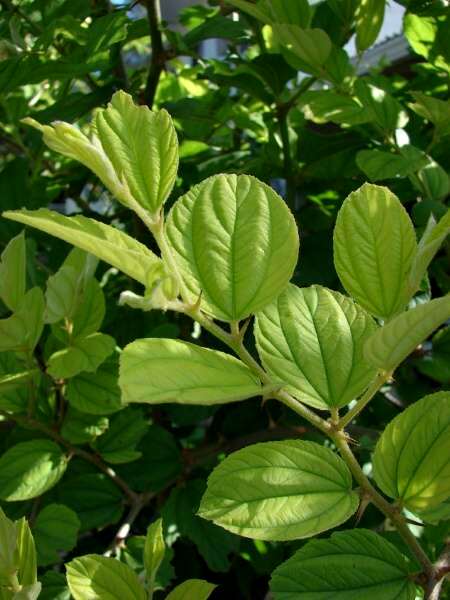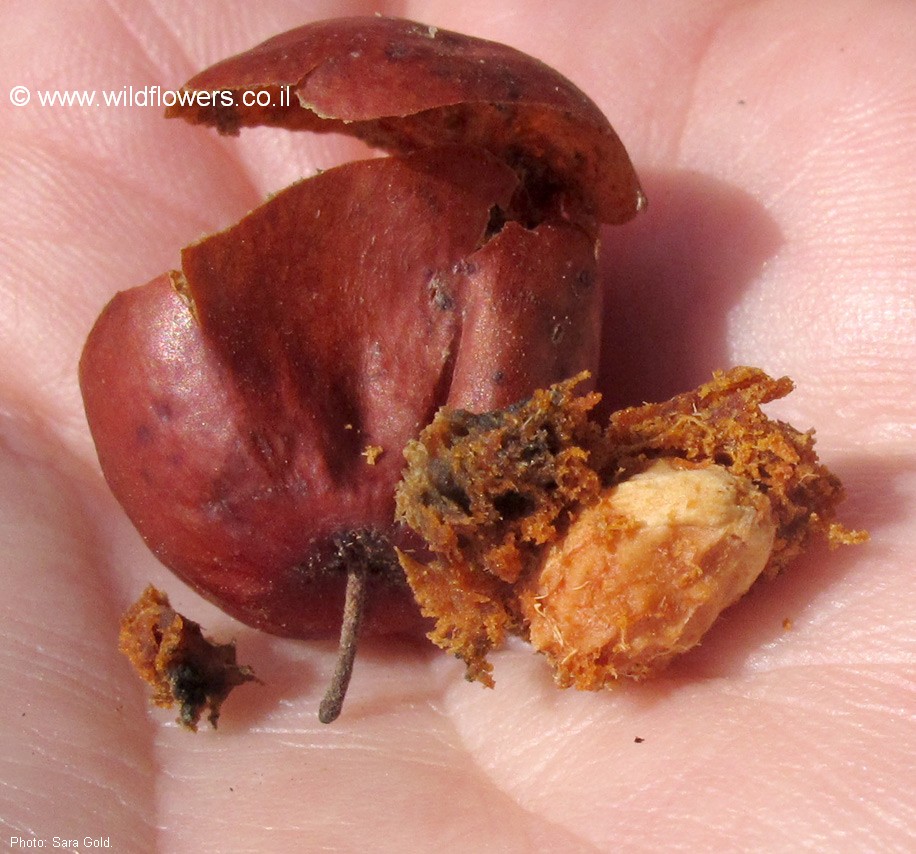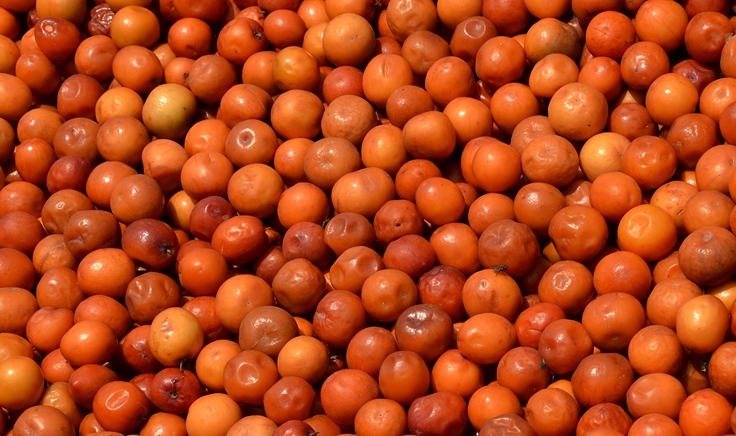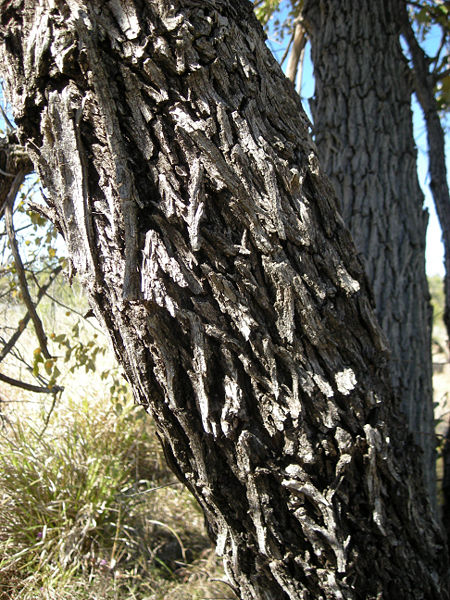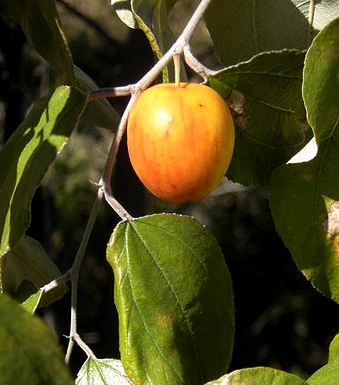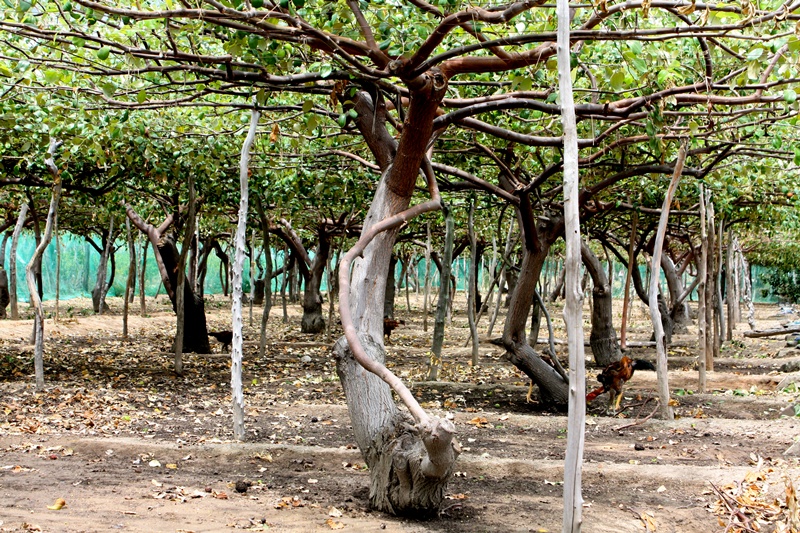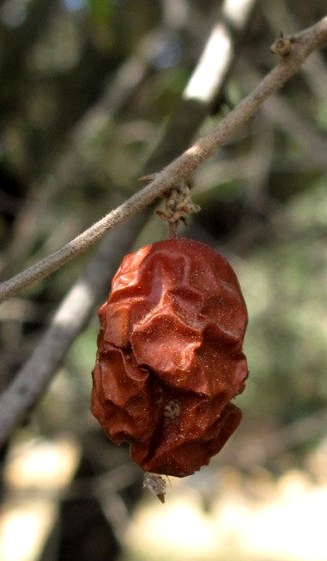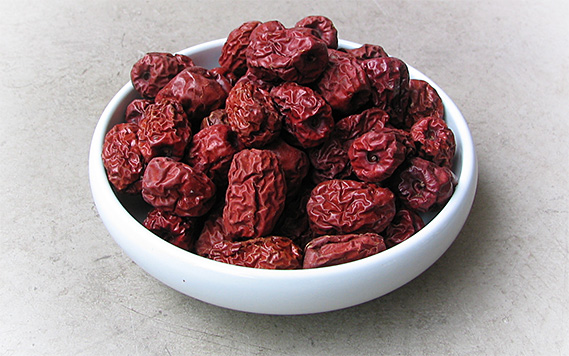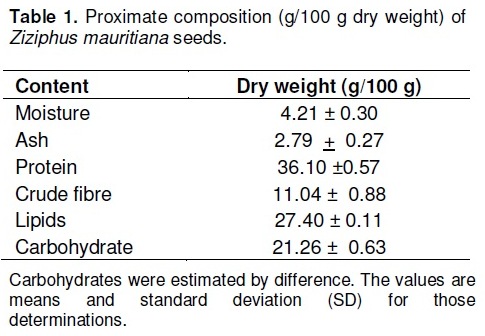Zizyphus Mauritiana
Yield
In India, Pakistan, Bangladesh and parts of Africa there are 90 or more (cultivars/ types of Chinese Apple) depending on the habit of the tree. Seeding trees bear 5,000 to 10,000 small fruits per year which equates to about 50 to 200kg. Superior grafted trees may yield as many as 30,000 fruits. The best cultivar fruits normally average 66-77kg annually. Fruit production starts from the third or fourth year and peak fruit production usually starts from about 10 years of age and continues until about 40 years. Oil is extracted from the seed within in the fresh fruit; the separation is called “De-stoning the fruit”. There is a single, hard, oval or oblate, rough central stone which contains 2 elliptic, brown seeds, 1/4 in (6mm) long. The pericarp of this fruit is consumed either fresh or dried while its seeds are usually discarded as waste.
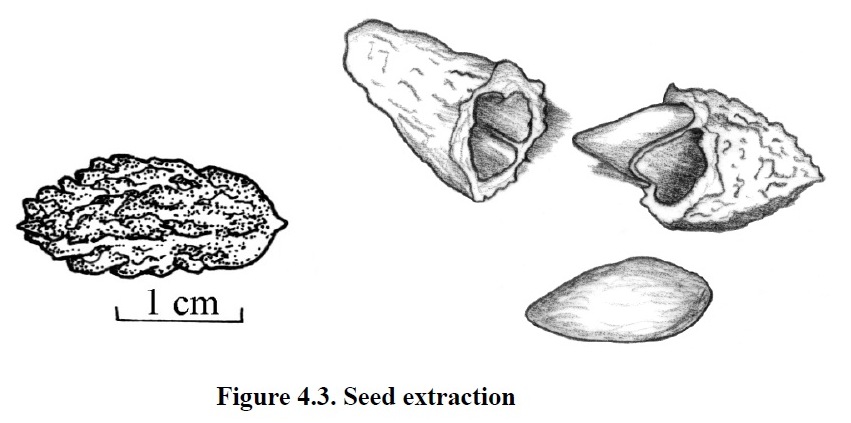 Fresh fruit weight from a tree is substantially different from the seed weight. To give an idea of the difference, Indian researchers recorded fruit weights between (6.63-44.72 g) and the stone/seed weight between (0.71-3.94 g) or a pulp-stone ratio (9.3-11.3 to 1). Average oil yield per tree is 4.95kg and the average yield per hectare is 1371kg. Oil yield from the seeds is 33-38%, and the reported iodine value is 81.8 and CN value is 55.37. The protein content of the seeds is 36.10 ± 0.57%. In 2006, Bangladesh produced 73000 tons of Zizyphus Mauritiana.
Fresh fruit weight from a tree is substantially different from the seed weight. To give an idea of the difference, Indian researchers recorded fruit weights between (6.63-44.72 g) and the stone/seed weight between (0.71-3.94 g) or a pulp-stone ratio (9.3-11.3 to 1). Average oil yield per tree is 4.95kg and the average yield per hectare is 1371kg. Oil yield from the seeds is 33-38%, and the reported iodine value is 81.8 and CN value is 55.37. The protein content of the seeds is 36.10 ± 0.57%. In 2006, Bangladesh produced 73000 tons of Zizyphus Mauritiana.
Carbon Capture
I was unable to find rates of CO2 sequestered for Ziziphus Mauritiana – Chinee Apple in order to qualify for carbon tax credits. If you have tons per hectare per year, please send along your information and I will post it here.
Byproduct Uses
The fruit is eaten raw, stewed, or pickled or used in beverages. It is a good source of carotene, vitamins A and C, and fatty oils. It is second only to guava and much higher than citrus or apples. Ripe fruits are preserved by sun-drying and a powder is prepared for out-of-season purposes. It contains 20 to 30% sugar, up to 2.5% protein and 12.8% carbohydrates.
In India and Queensland, the flowers are rated as a minor source of nectar for honeybees. The honey is light and of fair flavor. The dried ripe fruit is a mild laxative. The seeds are sedative and are taken, sometimes with buttermilk, to halt nausea, vomiting. Bark paste is applied on sores. An infusion of the flowers serves as an eye lotion. Ziziphus Mauritiana yields a medium to heavy weight, fine-grained, fine-textured, tough, durable, hardwood with a density of 535-1080 kg/m³. Heartwood is buff-coloured, pale red or brown to dark brown, sometimes banded or with dark streaks.
Easy to work and takes a high finish. It is hard and strong. The wood is used for general construction, furniture and cabinet work etc. and is also suitable for the production of veneer and plywood. The wood makes good charcoal with a heat content of almost 4,900 kcal per kg.
Ber trees are also one of the best hosts for the lac insect (Kerria lacca). The insect sucks the juice from the leaves, producing an orange/red resin. This can be harvested and is most commonly used as shellac in industry for the production of waxes and varnishes. The tree cannot be grown for fruit if it is a host to the lac insect. The leaves are readily eaten by camels, cattle and goats and are considered nutritious.
Description
Ziziphus Mauritiana is a spiny, evergreen bushy shrub 1.5-2 m tall, up to a tree 10 to 12 m tall with a trunk diameter of about 30 cm. It may be erect or wide-spreading, with gracefully drooping thorny branches, straight or hooked spines. A medium sized tree that grows vigorously and has a rapidly developing taproot, a necessary adaptation to drought conditions. The species varies widely in height.
The fruit is of variable shape and size. They can be oval, oblong or round, and 2.5-6.25 cm long, depending on the variety. The flesh is white and crisp. The fruit is a bit juicy and has a pleasant aroma with a smooth and glossy skin. The fully mature fruit is entirely red.
Fruit set depends on cross-pollination by insects attracted by the fragrance and nectar. The pollen is thick and heavy. It is not airborne but is transferred from flower to flower by honeybees. The flowers are pollinated also by ants and other insects, and in the wild state the trees do not set fruits by self-pollination. The flowers are tiny, white, greenish white or yellow, 5-petalled and are usually in twos and threes in the leaf axils. 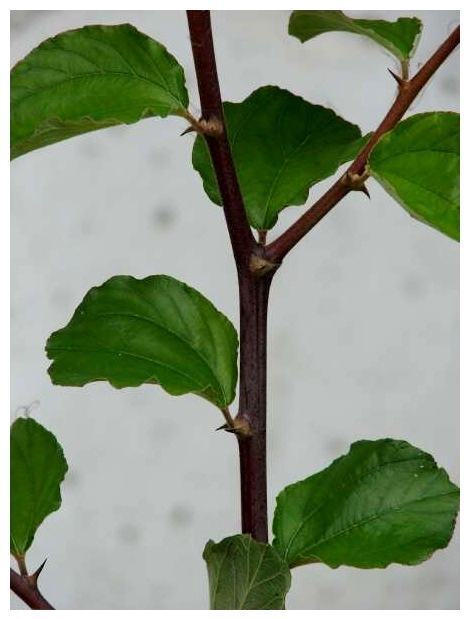
Distribution
Z. Mauritiana is hardy tree that copes with extreme temperatures and thrives under rather dry conditions with an annual rainfall of 6 to 88.5 in (15–225 cm). It also grows well on laterite, medium black soils with good drainage, or sandy, gravelly, alluvial soil of dry river-beds in the tropics and sub-tropics. Commercial cultivation usually extends up to 1000 m, beyond this elevation trees do not perform well, and cultivation becomes less economical. Under favorable conditions, height increment on loose soil is 75 cm in 1 year and 1.2 m in 2 years.
Planting
The tree has a high tolerance to both water-logging and drought. Temperature for survival is 44.6º to 55.4º F (7º-13º C); the maximum, 98.6º to 118º F (37º-48º C). Studies report that this species flourishes in alkaline soils with a pH as high as 9.2. However, deep sandy loam to loamy soils with neutral or slightly alkaline pH is considered optimum for growth. In India, the tree grows best on sandy loam, neutral or slightly alkaline. Even moderately saline soils are tolerated. Planting is usually done at a density of 277 plants per hectare and propagates by seeds, seedlings, direct sowing, root suckers as well as by cuttings. Seed pretreatment is beneficial. Storage of the seed for 4 months to let it after-ripen improves germination.
The hard stone restricts germination and cracking the shell or extraction of seeds hastens germination. Without pretreatment the seeds normally germinate within six weeks whereas extracted seeds only need one week to germinate. Studies indicate that germination can be improved by soaking seeds in sulfuric acid. Germination time can also be shortened to 7 days by carefully cracking the endocarp. Its seedlings do not tolerate transplanting, therefore the best alternatives are to sow the seeds directly in the field or to use polythene tubes placed in the nursery bed. Seedlings are ready for budding in 3 to 4 months.  Seeds should be collected from fruits that have fully ripened on the tree. Seed stones collected from fallen fruits of ber often have poor viability. 50-70% of the seed stones will have non-viable seeds. Such seed stones float in salt water (15% salt) and can be thrown away; Seeds may not have 100% viability, so it is better to sow more seed than is required in terms of number of trees. About 20-30% extra seed should cover losses.
Seeds should be collected from fruits that have fully ripened on the tree. Seed stones collected from fallen fruits of ber often have poor viability. 50-70% of the seed stones will have non-viable seeds. Such seed stones float in salt water (15% salt) and can be thrown away; Seeds may not have 100% viability, so it is better to sow more seed than is required in terms of number of trees. About 20-30% extra seed should cover losses.
Seedling vigour is greatest when sown after 8 months storage. Germination may be reduced when the seeds are over a year old. In Australia, plants growing under natural conditions are capable of producing seeds once they reach a height of about 1m. Plants between 1 and 2m high produce, on average, less than five fruits per season.
Large plants (>5m high) can produce 5000 or more fruits in a single season. To germinate, seeds need full sunlight. The seedlings should also be given full light. It is likely that seedlings will need about 15 months in the nursery before planting in the field. Untrimmed trees must be spaced at 36 to 40 ft (11-12 m), but carefully pruned trees can be set at 23 to 26 ft (7-8 m). Pruning should be done during the first year of growth to reduce the plant to one healthy shoot, and branches lower than 30 in (75 cm) should be removed. At the end of the year, the plant is topped. During the 2nd and 3rd years, the tree is carefully shaped.
Thereafter, the tree should be pruned immediately after harvesting at the beginning of dormancy and 25 to 50% of the previous year's growth may be removed. There will be great improvement in size, quality and number of fruits the following season. A suitable species to aid in fixation of coastal sand dunes, erosion control, shade, windbreaks, boundary or barrier support. Tree is useful as a living fence; its spiny stems and branches deter livestock.
Fertilizing
It has been traditional to apply manure and ash as fertilizer up to the 5th year. Zinc and boron sprays are sometimes applied to enhance glossiness of the fruits. Irrigation is highly beneficial. Water-stress will cause immature fruit drop. In India each tree had been given annual treatments of 22 lbs (10 kg) manure with 1.1 lbs (0.5 kg) ammonium sulphate for every year of age up to the 5th year.
Farmers utilizing commercial fertilizer (NPK) in larger amounts, apply twice annually, the first at the rate of 110 lbs/acre (about 110 kg/ha) and the second at 172 lbs/acre (about 172 kg/ha). Organic manures and phosphate fertilizers should be applied 30 days after pruning as a single dose. Nitrogenous fertilizers should be applied in 3 split doses (30, 90 and 150 days after pruning). Potassium fertilizers may be applied only when necessary based on the soil conditions at the location.  Growth regulators are now being utilized to bring about early and heavier blooming, enhance fruit setting, prevent fruit drop, and increase fruit size, and promote uniform ripening. These practices have demonstrated that an improved crop can bring in 2 to 3 times the revenue of that achieved by conventional practices. The greatest enemies of the harvest are fruit flies. Some species are more susceptible than others. The larvae pupate in the soil and it has been found that treatment of the ground beneath the tree helps reduce the problem.
Growth regulators are now being utilized to bring about early and heavier blooming, enhance fruit setting, prevent fruit drop, and increase fruit size, and promote uniform ripening. These practices have demonstrated that an improved crop can bring in 2 to 3 times the revenue of that achieved by conventional practices. The greatest enemies of the harvest are fruit flies. Some species are more susceptible than others. The larvae pupate in the soil and it has been found that treatment of the ground beneath the tree helps reduce the problem.
A leaf-eating caterpillar and the green slug caterpillar may attack the foliage. Mites form scale-like galls on twigs retarding growth and reducing the fruit crop. Lesser pests include a small caterpillar, Meridarches scyrodes, that bores into the fruit. Weevils, leafhoppers and mealy bugs have also been reported. Insect pests include Meridarchis scyrodes, Oocussida cruenta, Myllocerus spp., Thiacidas postica, Drepanococcus chiton, Florithirps tregardhi and Systasis spp. 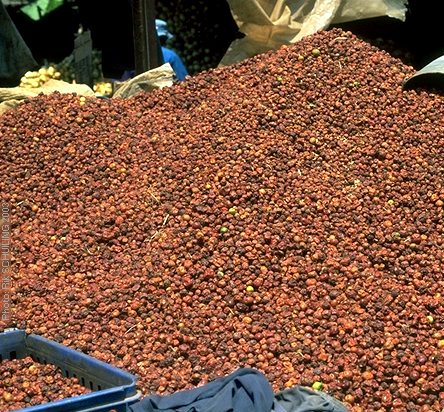
Harvesting
In India, some types ripen as early as October, others from mid-February to mid-March, others in March, or mid-March, to the end of April. It is possible for there to be 2 crops a year, the main in early spring, the second in the fall. The fruits can be harvested by manual shaking or beating the tree branches to induce the mature fruits to fall onto a cloth sheet below the tree. However, hand picking using a ladder or clipping (using an iron hook or loop fixed to a long stick e.g. bamboo) is better as less fruits are damaged.
Mature ber trees need to be picked 4-5 times in a season as the fruits do not mature at the same time. Only fully mature fruits are picked directly from the tree. They are transported in open bags to avoid fermentation A worker is capable of manually harvesting about 50kg (110lbs) per day. If the fruits are harvested with the stalks attached, the storage life may be increased. Fruits harvested around noon generally have a better storage life. After harvest, the fruits can be cooled by dipping in cold water for 2 hours or by exposing to cold air for 4 hours to extend their shelf life.
Extraction
The fatty-acid methyl ester of Ziziphus Mauritiana seed oil meets all of the major biodiesel requirements in the USA (ASTM D 6751-02, ASTM PS 121-99), Germany (DIN V 51606) and European Union (EN 14214).
The average oil yield is 4.95 kg oil/tree or 1371 kg oil/hectare.
Drying and Storage
In storage, the fruits may be spotted by the fungi. Fruit rots are caused by Fusarium spp., Nigrospora oryzae, Epicoccum nigrum, and Glomerella cingulata. 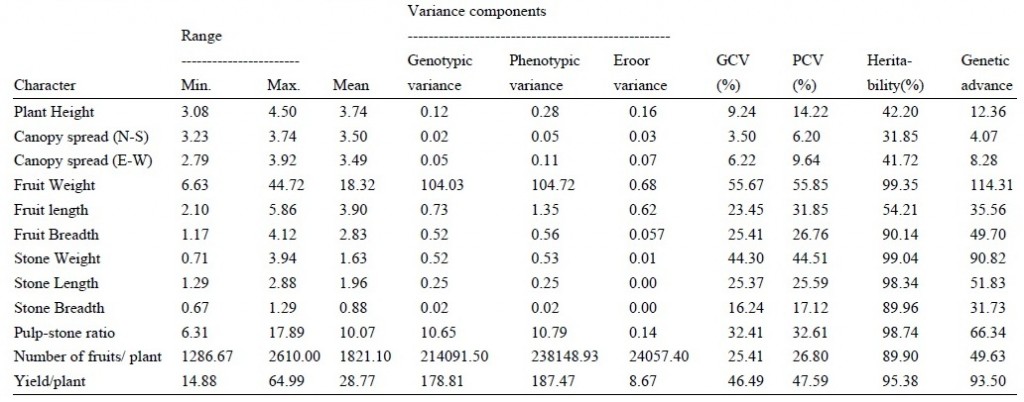
David DuByne is a consultant for companies entering Myanmar & agricultural commodities export broker for green coffee, honey, farm raised fish out of Myanmar. He can be reached at ddubyne (at) oilseedcrops [dot] org.

